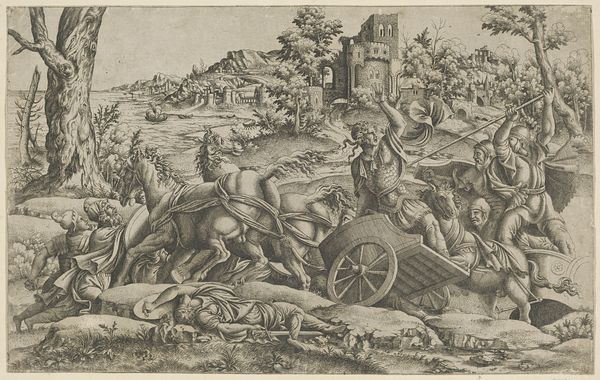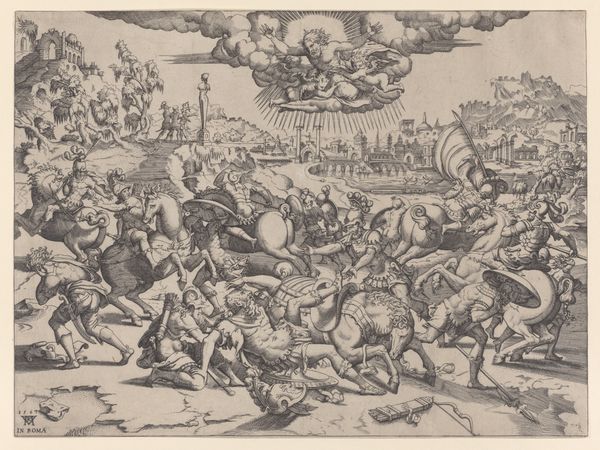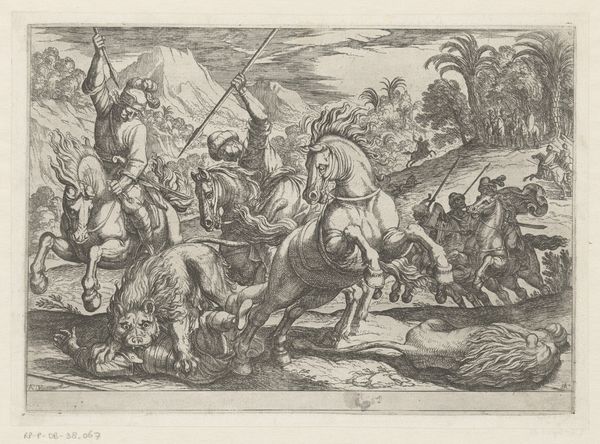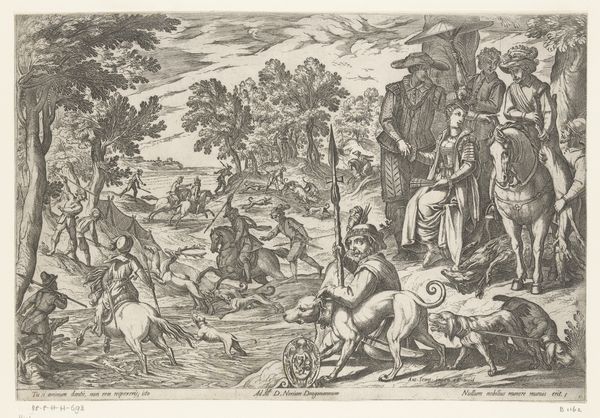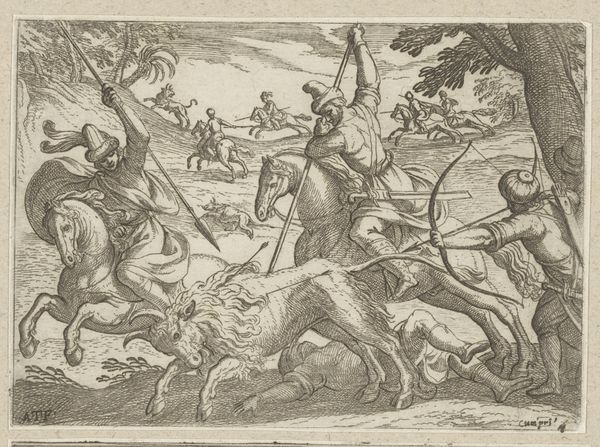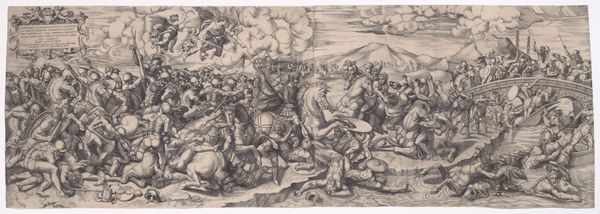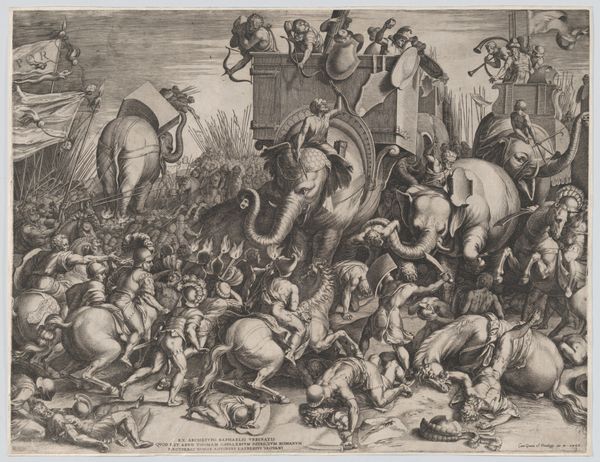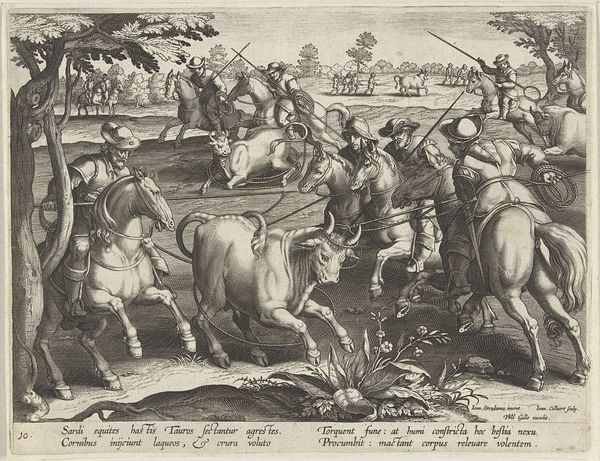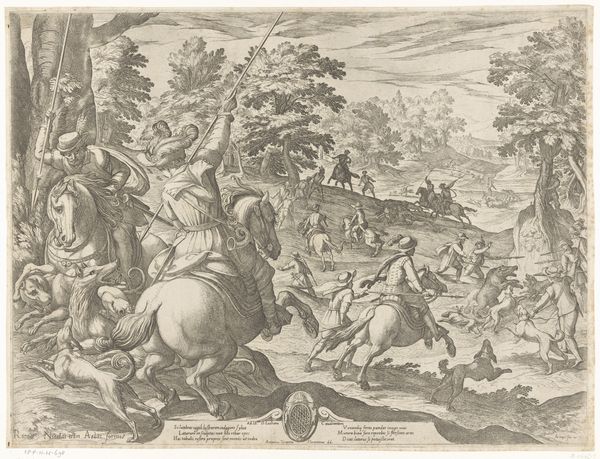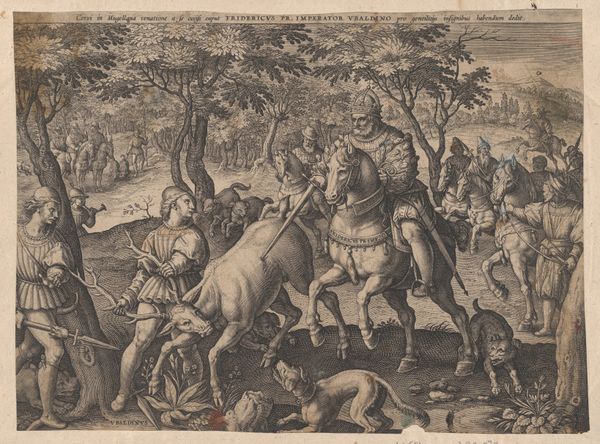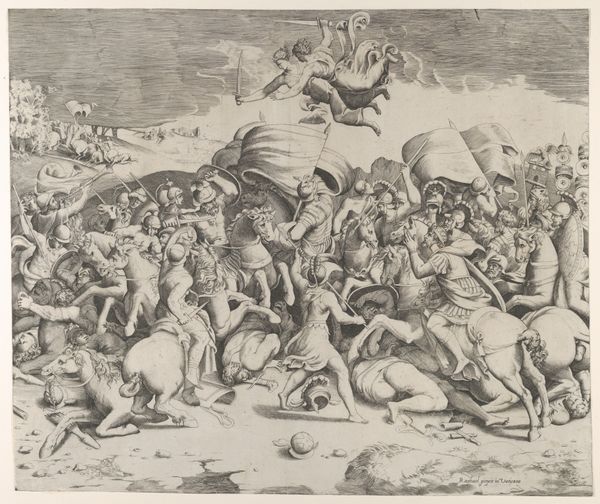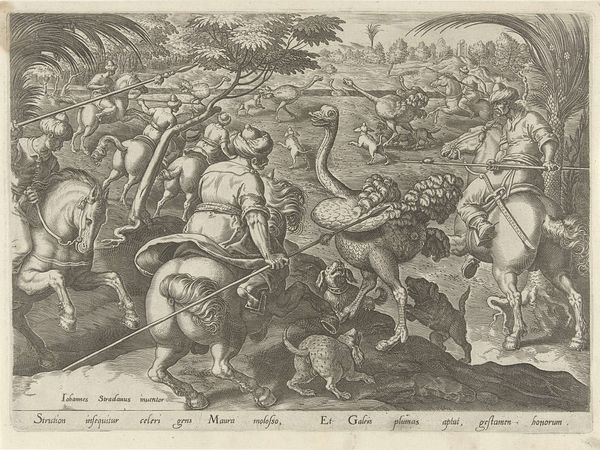
print, etching, engraving
#
ink drawing
#
allegory
# print
#
etching
#
mannerism
#
figuration
#
history-painting
#
engraving
Dimensions: height 365 mm, width 472 mm
Copyright: Rijks Museum: Open Domain
Curator: This print, dating from 1565 to 1630, is titled "Strijd tussen centauren en verschillende dieren," which translates to "Combat between Centaurs and Various Animals." Antonio Tempesta is credited with its creation, and it now resides in the Rijksmuseum. Editor: It’s incredibly dynamic. The eye just races around the scene trying to take it all in! It feels almost overwhelmingly energetic, like the chaotic moment frozen in time. Curator: That dynamism is very characteristic of Mannerism. Look at the ways Tempesta has staged this conflict. It’s an etching and engraving, allowing for incredibly fine detail. It reflects a renewed interest in classical themes in the early modern period, reimagined through the lens of the artist's contemporary society. Editor: The layers upon layers of hatching – you can practically feel the intense pressure he applied to the plate to achieve such deep blacks. I wonder about the accessibility of printmaking at this time, and who would be seeing this sort of imagery? Curator: Prints like these circulated widely, which meant that classical imagery and its associated humanist values were disseminated among a growing public. The question of patronage is key here too – someone funded Tempesta's work and, through distribution, actively shaped the political meaning of imagery at the time. These historical narratives held symbolic weight. Editor: Right. And let’s not overlook the sheer physicality of creating these incredibly intricate plates. It is amazing how engravers could capture such brutality and energy on a copper or steel plate. These were commodities traded, collected, displayed… their value intrinsically tied to labor. Curator: Precisely, and it is also intriguing to analyze what the scene may say about hierarchies within 16th-century society. We have a "history-painting" featuring mythological creatures whose battle might stand for contemporary socio-political conflicts, power, or even religious struggle, viewed through the lens of Tempesta's time. Editor: I find it incredible to consider the process behind it all—the etching, the inking, and the paper pressing. Each print bearing the mark of the craft involved in its production. It brings it back to human labor. Curator: Indeed, so much of our understanding of the early modern period is filtered through artwork that serves as both art object and historical record. Editor: Right, it is always useful to think of these pieces as the result of specific conditions of production, of maker’s labor, rather than timeless, divinely inspired creations.
Comments
No comments
Be the first to comment and join the conversation on the ultimate creative platform.
